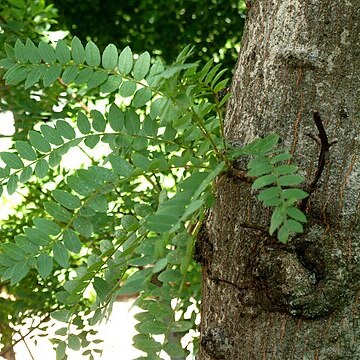It is a deciduous tree. It grows 8-18 m tall. The crown is round or spreading. The leaves are crowded at the tips. They are 10-20 cm long. They are compound with 20-40 leaflets. These are shiny and grey-green. The flowers are greenish-white and in compound heads. The fruit are small and light brown. They are 4 valved capsules.
Tree, up to 20 m high. Bark not spotted. Leaves always with 10 or more pairs of leaflets, leaflets up to 6 mm wide. Mericarps 4. Fruit 1.5 times longer than wide. Flowers cream to greenish white.


